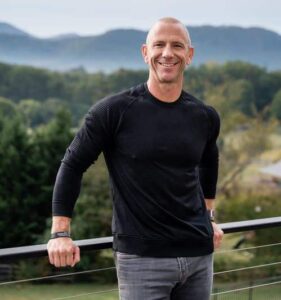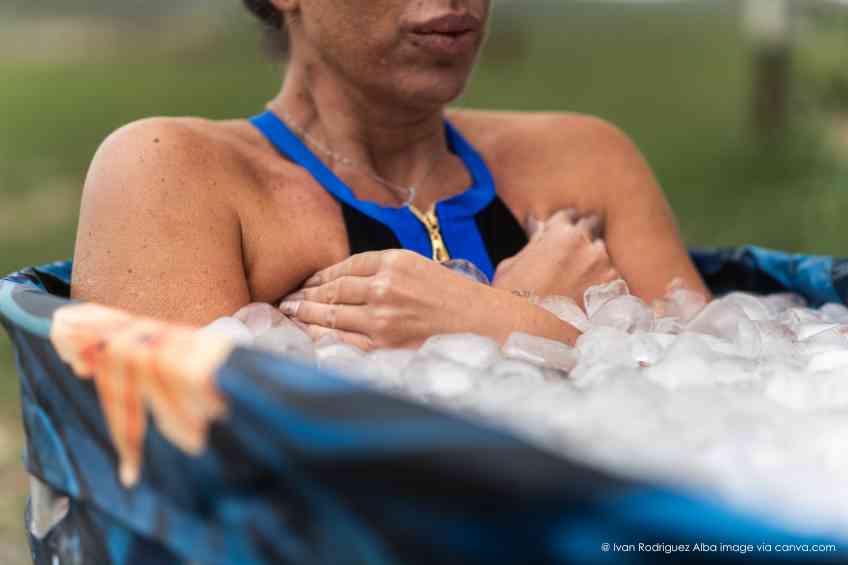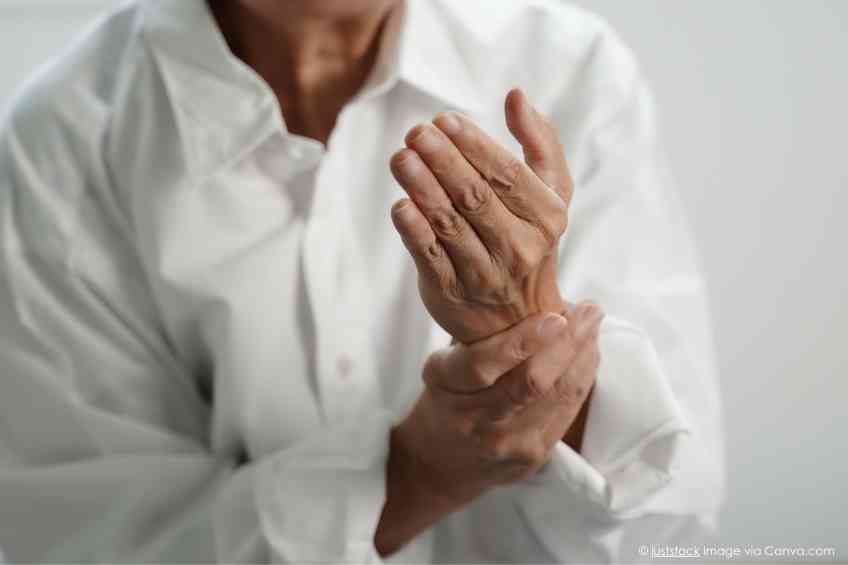Osteoporosis. A lot of people realize it has something to do with bone health and that it’s not an especially good thing. That’s an understatement. The condition relates to a deterioration of bone density and strength. The problem once seen as limited to “mature” adults, particularly women, is now increasingly impacting those in their 20s, 30s and 40s. Overall, it is a growing dilemma for all ages. It is also a silent and dangerous/deadly threat that leads to falls and fractures. Why does it seem America is retreating in the face of the osteoporosis threat? There are several reasons and Dr. Doug Lucas, a recognized bone health authority, spoke to WellWell recently about the rising concerns, inherent dangers and possible treatments related to the condition. Read on.
What exactly is osteoporosis? Does it come in a single form? Are there variations? How does it relate to bone health?
I’d like to reframe osteoporosis because when people hear the term generally, they’re thinking about this thing called DEXA or the imaging modality that tells them whether or not they may or may not have osteoporosis. And that’s not what it is. Osteoporosis is essentially a bone metabolism problem, meaning that you’re losing more bone than you’re growing or you’re building over a long enough period of time where you lose enough bone density, bone strength and bone matrix that it puts you at increased risk of fracture.
And when you talk about bone metabolism, we’re talking about bone loss, is that the way to equate metabolism?
Correct. In some ways, that’s the end effect that results in osteoporosis. but your bone is always turning over, so different ways to look at the statistics and people would say that you are replacing your bone every 10 years in your human body. So, the body is breaking down and building a new skeleton every decade. That’s again, variable. But that’s kind of the idea that we’re always building up and breaking down bone. But osteoporosis is the result of breaking down more than you’re building up over long enough to become in this sort of pathologic state.
Is the number of people affected by osteoporosis growing, short of the fact that we’re an aging population? If so, why?
Yes, there are a couple of different ways to look at this. So, you’re correct in that we generally don’t worry about osteoporosis until we start talking about an older population. But that specific age is becoming a moving target because we have a subsection of the population that’s aging very gracefully. Then we have some individuals who are not aging very gracefully, which unfortunately is the majority of the population. So, if you go back a couple of decades, we used to talk about 65 and 70 being the screening age for women and men respectively. Now we are taking a whole other look at that and in my practice, we’re seeing individuals who are in their 40s, 30s and 20s that already have osteoporosis. To some extent, we should be monitoring this issue and going into early adulthood when peak bone mass occurs. We’re not going to see it as often, but there are so many risk factors for osteoporosis that the majority of the population is exposed to. This is a problem that is increasing in diagnosis so the number of people who have it is going up. But the number of people actually being diagnosed is going down. And that’s because we’re not screening for it. So, there’s just more people that have it who don’t know.
Why would we not be screening enough or diagnosing enough of these cases?
I think it’s missed for two main reasons. One is that it’s just not on most people’s radar. You know we talk about cardiovascular health; we talk about dying from a heart attack; screening for cancer. We’re checking all these boxes to make sure that we’re doing the things to prevent the usual causes of death. Osteoporosis kind of gets overlooked. The other reason why screening is decreasing is that in the past we’ve relied on primary care doctors and systems that get reimbursed for performing DEXA scans as a revenue stream for a practice. The cost of the machines has continued to go up, the cost of the reimbursement has gone down and so now it no longer makes fiscal sense for a primary care doctor or even a small system to pay for a DEXA scanner that they’re going to end up losing money on. So, you hate to say it, but it’s driven by finances where it doesn’t make financial sense to screen people for osteoporosis. This is something that needs to be addressed at the top level of our healthcare system. But when we talk about why we’re missing this, I think it’s because we don’t talk about osteoporosis enough. When you look at the top three to four causes of death in the United States of adults, unintentional injuries are usually number 3 or 4. And as we age, falls and osteoporotic fragility fractures are the primary cause of unintentional injuries. So, it is a top three or four cause of death for adults as we age. And yet we don’t hear much conversation about it.
Are we not screening those mature adults as often as we have been in the past?
There was a recent study that was just published. In the last couple of months, a narrative was written on how bad of a job we’re doing as a system in the U.S. on diagnosing and then treating patients with osteoporosis. They looked at all the people who had fragility and fractures, which is by definition from osteoporosis, who carried the diagnosis at the time of the injury. And it was less than 20 percent. This means less than 20 percent of the individuals that had an osteoporotic fracture had a diagnosis of osteoporosis and then to make matters even worse, less than 20 percent and even in some situations less than 10 percent of the people that had a fragility fracture went on to receive a pharmacologic treatment, which they were a candidate for in the traditional medical model. So, we’re just not doing a good job of diagnosing or treating it.
How many people may potentially be walking around with osteoporosis and not realize it?
The statistics would say that about 10 million American adults have osteoporosis. It’s hard to know how many have osteopenia, so that would be sort of like the runner-up to osteoporosis on a bone density scale. I would argue it’s probably double, triple or more than that because again, we’re doing a terrible job of screening for it. So how could we possibly know? There are two main factors behind this. One is, are we achieving our peak bone mineral density in the first place? And let me just take a second to explain that. As we grow through adolescence and early adulthood, our skeleton is pliable. And if you look at an X-ray of a baby, for whatever reason, it’s mostly cartilage. As we grow our bones, lengthen our bones and solidify, they ossify and then they become solid where the growth plates close. There is a peak bone mass that occurs in early adulthood that we really have to work hard to achieve. Throughout our adolescence and early adulthood, as we get a more sedentary population, more people are spending time in front of screens. This includes kids in school, people doing less athletic endeavors and fewer activities in their recreational time that are athletic and more sedentary. We’re not doing the things that we need to do to achieve that peak bone mass.
Additionally, kids’ diets are terrible and so we get kids that are eating a highly processed food diet. They’re not getting adequate protein, they’re not building muscle, they’re not getting the nutrients they need. So, you add those two things together, and they don’t have peak bone mass. I think, if we were to screen globally, which will never happen, but let’s pretend that you screened all of the adults in their 20s to 30s in the United States, I think we would see a large percentage of people that are set up for osteoporosis, either they have it now or they’re going to have it in the near future because when you get to the second side of that equation, which is how quickly are you losing bone from your peak bone mass.
So, let’s say that you did achieve peak bone mass, now you have a long runway, and you can lose bone gradually as you age and hopefully not achieve osteoporosis. But the rate of loss is going to be increased with variable factors, whether it be exposures, toxins, poor diet, gut dysfunction and all the potential things that can expose you to more rapid bone loss. And that is so rampant because it includes, again, all the things I just mentioned, but also hormone abnormalities, low testosterone in men, oral birth control in women and stress particularly in women, which we know is a big deal right now. So, all of those potential lifestyle factors as well as other additional exposures can increase your risk of and rate of bone loss. And again, you maybe had good peak bone density, but now you’re losing it at a rate much higher than you would anticipate, which is usually around five to one percent per year. But we see it clearly, you know three percent, five percent per year and you’re going to become osteoporotic very fast.
It’s often reported that women are more susceptible to osteoporosis than men. Is that true?
Women are more likely to develop osteoporosis because they’re going to have a lower peak bone mineral density to begin with. And when we look at some of the statistics, it is adjusted for both sex and race. If you look at the statistical average, the statistical average will fall into osteoporosis during the normal lifespan of a human. So statistically, they are likely to develop osteoporosis. Whereas if you look at, say, an African American male, they could follow their normal statistical curve and live to 130 and never develop osteoporosis. So, there is a difference between women and men. I think the reason why women are going to be more likely to have osteoporosis is that their bone mineral density is starting to lower even though they try to adjust for that, and they’re more likely to lose it more quickly because of the clear hormone change that occurs around menopause. So, whereas men will lose testosterone gradually as they age, women lose estrogen and progesterone as if they fall off a cliff around menopause, and that provokes a very rapid bone loss situation.
Also, women are more sensitive to some of the societal and cultural things that are going on in our modern world. Testosterone in women is made primarily in the adrenal glands. The adrenal glands are where we make our stress hormones. So, I see adrenal dysfunction globally in women, especially in the perimenopause and menopause years because of all the things that women are expected to do in our society. Not only are women doing a lot of the traditional roles that women did in the previous generations, but now they’re also having careers, they’re taking care of their kids, they’re taking care of their parents and all of that stuff adds up. And they’re not only going to see the hormone changes that go along with perimenopause and menopause, but they’re going to see the stress that’s going to negatively impact their testosterone as well. Whereas with men, we see that we’re exposed to that as well, but we don’t have that same negative impact, at least from an osteoporosis perspective. Women are also going to be exposed to other pharmaceuticals. They’ve been exposed to oral birth control frequently, which is going to have a negative impact on bone density. The list just goes on and on and on, where it looks much worse for women than it does for men when it comes to bone health.
Why is it not growing or is it just a demographic segment that’s aware of this? And how can women control it?
I think part of the issue is that it’s known as the silent disease because you’re not going to feel osteoporosis. And so, if you’re asymptomatic, you’re not provoked to do some kind of a screening, particularly an early screening. I think one of the great movements that we’re seeing right now is a big push for education and treatment around menopause. Treating menopause not as if it is a natural thing that occurs that you must suffer through, but it is a natural thing that occurs with symptoms that are manageable through lots of different avenues. And so, there is a huge push to help women understand that this is not just something you need to suffer through. Let’s look at what’s going on and let’s talk about the lifestyle supplemental, potentially pharmacological things that we can do to help you to get through this process and to optimize your health for the second half of a woman’s life.
Although statistically men are less likely to fall into the osteoporosis range. But statistically, if a man breaks a hip or has a fragility fracture, he is more likely to die and he is going to have a less optimal outcome. None of the outcomes are particularly great. But men are worse off because when a man loses bone mass fast enough, he is in a generally poor metabolic state to begin with because he had a longer fall—not meaning that he’s taller physically, but his health was declining faster for him to achieve a state of osteoporosis. So, I think those men are generally going to be sicker than their female counterparts. It’s worth doing early screening for osteoporosis in men also because hormone dysfunction in men goes back into their 20s and 30s. We see low testosterone in men because there are so many endocrine disrupting the things in our society, in our food and our water and it is hard for men to have optimized testosterone. And then testosterone is this substance that is looked down upon. If you’re considering replacement of testosterone, people start to frown and say, “Oh well, you should not do that because testosterone is dangerous and it’s for bodybuilders who want to compete dirty.” But that’s not the case at all. And we see this as an issue for men.
Once you are diagnosed with osteoporosis, what treatments are available? Can it be reversed or is it a matter of just limiting the damage?
Osteoporosis is reversible as long as you can make changes to your diet, exercise and potentially consider hormone replacement. If you’re beyond that, then pharmacological management might be the only option that you have. But where I see the biggest error in the medical management of osteoporosis is with younger women. But men and women in their 40s and 50s who get screened early for whatever reason and then their doctor says, well, the standard of care is to go on a bisphosphonate drug, which is an antiresorptive drug. It means it poisons the bone breakdown cells and it will increase your bone mineral density as you go forward in time, and it will reduce fracture risk. But you can only use those drugs for three to five years, depending on the form of the drug. If you’re 50 years old and you’re a woman who just went through menopause, what are you going to do when you’re 55? The drug therapy has a lot of potential downsides. There are some risks. And the biggest issue is that it’s just myopic. If you have a drug that you can’t use for more than five or ten years and you’re 50 years old and you’re essentially in middle life, what are you going to do for the rest of the time? We know within that population if you look for the underlying cause of bone loss, you look for the hormone dysfunction. You look for the other potential causes of bone loss and bone metabolism dysfunction and you address those things. Then we see essentially everybody improving their bone health, improving bone mineral density and reversing osteoporosis.it is reversible if you have the capacity to do things that you need to do from a health optimization and longevity perspective. It’s building muscle. It’s doing resistance training. It’s eating the right diet. It’s doing all of those things that you’re going to want to do anyway for healthy aging.
What should we be emphasizing on a personal level versus a hormonal or treatment level?
The way that we look at this is that women are going to be a victim of what they’ve been told for the last 30 years, which is they’re going to be better off if they eat a low-fat plant, a low-fat diet and reduce saturated fat and cholesterol. That’s the message we’ve heard for the last 30 years. And what that message does is encourage people to eat a highly processed food diet, avoiding eating protein sources. They’re going to become sarcopenic, which means loss of muscle mass, which then leads to loss of bone mass or chicken or the egg. Hard to know which is which, but either way, we need to flip that upside down, particularly in a metabolically disadvantaged state. We need to focus on adequate protein sources. We need to get our adequate protein source from animal products because that’s what the literature supports is going to be better. We also want to remove potential toxins like added sugar, highly processed foods and seed oils. We need to get them into eating a whole-food diet that is protein-forward and anti-inflammatory.
What’s the biggest misconception facing osteoporosis?
I think the biggest thing is that it can’t be reversed. We hear this story from patients thousands and thousands of times, and the story goes like this, I got screened for a blank reason, I had osteoporosis and it freaked me out, I went to my doctor and they told me I had to take a blank drug and then I told them I wanted to do it on my own naturally. They said that can’t be done. That’s impossible. Doctors prescribe a drug and pressure them into taking it and then they go home and they read about the drug and they get even more scared. And so, they come to us with all this fear around fractures, around the drug, around the side effects. They’re freaking out. And then they go on to Facebook and they go on all these support groups for osteoporosis and hear all this conflicting information. They’re just sitting there with their head spinning. They have so much anxiety about what to do, how to do it and who to trust. That’s why we put as much information out there as we can to empower people that a diagnosis of osteoporosis is not the end. It doesn’t mean that your life is over. It just means that we need to understand what’s going on so that we can make a plan for moving forward with or without drug therapy. The vast majority of our patients don’t need drugs and can improve their bone health naturally.
About Dr. Doug Lucas
Dr. Doug Lucas is a dual board-certified physician specializing in optimizing health span and bone health. After completing his training at Stanford and starting his career as an orthopedic surgeon he left the traditional medical model to pursue a second fellowship and board certification in anti-aging and regenerative medicine and achieve the status of fellow in Anti-Aging and Metabolic Medicine. This functional training cleared him to launch Optimal Human Health MD and Optimal Bone Health MD, a nationwide telehealth practice. He also produces the podcast Optimal Bone Health with Dr. Doug Lucas.
Please visit Optimal Human Health MD to learn more.













